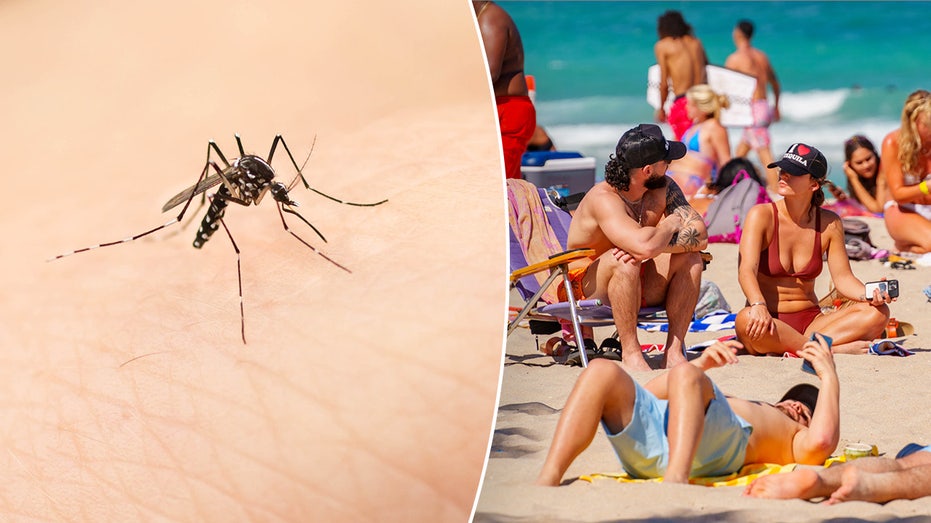Drug For Rare Disease Turns Human Blood Into Mosquito Poison - ScienceAlert
- Drug For Rare Disease Turns Human Blood Into Mosquito Poison ScienceAlert
- To fight malaria, scientists want to poison mosquitos—with human blood National Geographic
- Nitisinone makes human blood lethal to mosquitoes and outlasts ivermectin, study shows Medical Xpress
- Drug used for rare genetic disorders kills mosquitoes capable of malaria transmission Liverpool School of Tropical Medicine
- Scientists find drug that makes human blood deadly to mosquitoes | Study printed in Science Translational Medicine | Inshorts Inshorts
7 months 1 week ago
Altis says its AI tool can cut risk in cancer trials
7 months 1 week ago
Biotech, Business, Pharma, The Readout, biotechnology, drug development, drug prices, Research
Health – Demerara Waves Online News- Guyana
Guyana, Mount Sinai Health System and Hess announce five-year extension of National Healthcare Initiative
7 months 1 week ago
Business, Health, News, Guyana, Hess Corporation, Mount Sinai Health System, National Healthcare Initiative, President Irfaan Ali, public health system
STAT+: Pharmalittle: We’re reading about NIH removing scientific advisers, GSK’s shingles shot, and more
7 months 1 week ago
Pharma, Pharmalot, pharmalittle, STAT+
Medical News, Health News Latest, Medical News Today - Medical Dialogues |
Setback to Roche: Plea Against Natco on Risdiplam Patent Rejected by Delhi HC
7 months 1 week ago
News,Industry,Pharma News,Top Industry News
Priority pathogens: UK draws up new disease-threat watch list - BBC.com
- Priority pathogens: UK draws up new disease-threat watch list BBC.com
- UK experts urge prioritising research into 24 types of deadly pathogen families The Guardian
- Officials publish list of 'priority pathogens' posing greatest risk to public health Sky News
- Two viruses that pose the greatest risk of ‘next pandemic’ identified – as 22 other bugs on UKHSA watch lis... The Sun
- Priority Pathogens: The disease families which require urgent scientific research UK Health Security Agency
7 months 1 week ago
Here’s how old you are when your cognitive skills peak - BGR
- Here’s how old you are when your cognitive skills peak BGR
- Will Stimulating My Brain as I Age Keep It Sharp? The New York Times
- I've been studying the brain for 20 years. People who stay sharp throughout life do these 5 things CNBC
- Brain Power: 6 tips to stay sharp and increase memory The Times of India
- How to improve focus and memory at any age: 6 tips from Harvard University Hindustan Times
7 months 1 week ago
Dengue fever cases rising in popular spring break locations, CDC alerts
7 months 1 week ago
infectious-disease, insects, Health, lifestyle, Travel, spring-break-nation, us-puerto-rico, location-mexico, viruses
Pro Consumidor and CECCOM to launch special Easter operation against irregular alcohol sales
7 months 1 week ago
Health, Local
Pharmacognosist endorses Grenada Syrup to promote health-conscious cocktails
7 months 1 week ago
Agriculture/Fisheries, Business, Health, Travel/Tourism, cocktail, curlan campbell, gcna, grenada cooperative nutmeg association, grenada syrup, grenada tourism authority, gta, guido marcelle, joji watanabe, nutmeg, randall dolland
Risk of prostate cancer increases by 45% in men who share one common practice - UNILAD
- Risk of prostate cancer increases by 45% in men who share one common practice UNILAD
- Spotty Showers This Morning Yahoo
- Men Who Avoid Prostate Cancer Screening Face Higher Risk Of Death WGHN
- Prostate tests on men without symptoms could save thousands Daily Mail
- Avoiding prostate cancer screening can have dire consequences. Here's why The Week
7 months 1 week ago
Public Health reinforces search for malaria cases in farms and migrant communities
7 months 1 week ago
Health, Local
Swine fever outbreak in the country is “under control,” says Andres Bautista
7 months 1 week ago
Health, Local
NYPD detective shares grueling workouts to motivate cops to get in shape
7 months 1 week ago
Health, new-york-city, lifestyle, police-and-law-enforcement, healthy-living, Fitness, wellness, maha, be-well





